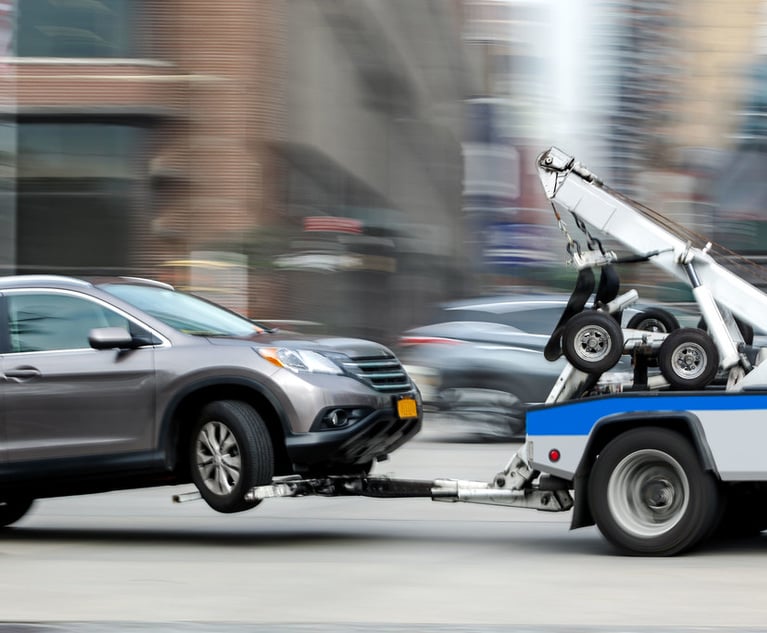The Florida Supreme Court added several new wrinkles to anongoing debate over the question of whether a general contractor'scommercial general liability insurance policies cover damage causedby the faulty workmanship of a subcontractor.
|Courts across the country have reached different conclusions onsimilar facts and nearly identical policy language. In U.S. FireIns. Co. v. J.S.U.B., Inc., the Florida Supreme Court has foundcoverage for faulty subcontractor work where other courts havenot.
|Even after the 2007 J.S.U.B. decision, however, courts in otherstates have ruled that CGL policies do not cover defectiveconstruction.
|Typical facts considered by all these courts are:
|o A general contractor builds a house and delivers the completedproject to the homeowner.
|o Later on, damages appear in the home's foundations, drywalland other interior portions.
|o It is undisputed that a subcontractor's faulty workmanshipcaused the home's structural damage.
|o The homeowner sues the insured contractor, who seeks coverageunder a CGL policy for the subcontractor's defective work.
|Whether the contractor will prevail on a coverage action againstthe insurer depends in large part on the applicable choice oflaw.
|The difference among jurisdictions stems primarily from thethreshold disagreement of whether faulty workmanship can triggercoverage under the insuring agreement of the CGL policy.
|A standard CGL policy provides coverage for sums that theinsured becomes legally obligated to pay as damages because of"bodily injury" or "property damage" caused by an "occurrence"within the coverage territory during the policy period.
|The CGL policy defines "property damage" as "physical injury totangible property, including all resulting loss of use of thatproperty."
|The CGL policy defines an "occurrence" as "an accident,including continuous or repeated exposure to substantially the samegeneral harmful conditions," but does not provide a definition forthe term "accident."
|CGL policies also contain "products-completed operations hazard"coverage for which additional premium is charged. Theproducts-completed operations hazard includes "all 'bodily injury'and 'property damage' occurring away from premises you own or rentand arising out of 'your product' or 'your work' except…[w]ork thathas not yet been completed or abandoned."
|Some courts reject the notion that faulty workmanship ordefective construction can be an "occurrence" resulting in"property damage." Other courts disagree and, after finding that an"occurrence" and "property damage" trigger the CGL policy'sinsuring agreement, continue the analysis to determine if thepolicy's exclusions nevertheless preclude coverage.
|In 1986, the Insurance Services Office revised the standard CGLform significantly. The post-1986 CGL policy has three exclusions,"j(5)," "j(6)" and "l", sometimes known as the "business risk"exclusions, which are pertinent to the question of whether thepolicy excludes coverage for faulty workmanship.
|Exclusion j(5) eliminates coverage for "that particular part ofreal property on which you or any contractors or subcontractorsworking directly or indirectly on your behalf are performingoperations, if the 'property damage' arises out of thoseoperations."
|Exclusion j(6)–the "faulty workmanship" exclusion–precludescoverage for "that particular part of any property that must berestored, repaired or replaced because 'your work' was incorrectlyperformed on it." There is an exception to exclusion j(6), however,for "'property damage' included in the 'products-completedoperations hazard.'"
|On the other hand, exclusion l–the "Your Work"exclusion–precludes coverage for "'property damage' to 'your work'arising out of it or any part of it and included in the'products-completed operations hazard,'" except for work performedon the insured's behalf by a subcontractor.
|More recently, the ISO has issued an endorsement that may beincluded in the CGL to eliminate the subcontractor exception to the"Your Work" exclusion.
|In U.S. Fire Ins. Co. v. J.S.U.B., Inc., the Florida SupremeCourt concluded that because the CGL policy does not define"accident," the term includes not only "accidental events," butalso faulty workmanship that is "neither expected nor intended"from the standpoint of the insured.
|The J.S.U.B. court also held that defective work that damages anotherwise non-defective part of the project has caused "physicalinjury to tangible property" and thus "property damage" under thepolicy.
|The J.S.U.B. court found that the post-1986 CGL policyexclusions do not preclude coverage for damage to a completedproject caused by a subcontractor's faulty workmanship. The courtnoted that the faulty workmanship exclusion j(6) does not apply toproperty damage included in the "products-completed operationshazard," and the "Your Work" exclusion (l) contains an expressexception for subcontractor work.
|Accordingly, the Florida Supreme Court held in J.S.U.B. that apost-1986 CGL policy with products completed-operations hazardcoverage, issued to a general contractor, provides coverage for aclaim made against the contractor for damage to the completedproject caused by a subcontractor's defective work, provided thereis no specific exclusion that otherwise precludes coverage.
|The Florida Supreme Court has instructed, however, that"property damage" under the CGL policy does not include the faultywork itself. In Auto-Owners Ins. Co. v. Pozzi Window Co., (Fla.2008), the homebuilder's insurer paid for damage to personalproperty caused by leaking windows on a multimillion-dollar home,but refused to pay the cost of repair or replacement of the windowsthemselves.
|The Pozzi court found that a claim for the repair or replacementof windows that were defective both prior to installation and asinstalled is merely an uncovered claim to replace a "defectivecomponent" in the project. Conversely, a claim for the repair orreplacement of windows that were not initially defective but weredamaged by defective installation is a claim for physical injury totangible property, thus constituting "property damage."
|The Florida Supreme Court's pronouncements have not been thelast word in the national debate.
|In Westfield Ins. Co. v. Sheehan Const. Co. (S.D. Ind. 2008),the contractor cited J.S.U.B. in seeking coverage under a post-1986CGL policy. Applying Indiana law, however, the district courtrejected the contractor's argument that damage to the otherwisenon-defective parts of the homes constituted "property damage."
|The court also found that water penetration arising from thesubcontractors' failure to properly seal the houses was the"natural and ordinary consequence of the defects," and thus was notan "accident" constituting an "occurrence."
|The Seventh Circuit, applying Illinois law in Lyerla v. AMCOIns. Co. (7th Cir. 2008), likewise found that the CGL policy didnot cover the insured's defective construction. However, the courtleft open the possibility that Illinois law might view faultyworkmanship as an "occurrence" if it resulted in damage to propertyother than the cost of repair or replacement of the faulty workitself.
|The Lyerla court cited J.S.U.B. for its recognition of the"analytical inconsistency of treating faulty work that damagesthird-party property as an 'occurrence,' but treating faulty workthat damages the insured's work as foreseeable and, hence, notaccidental." The 7th Circuit also cited J.S.U.B. for itsobservation that CGL policies themselves do not distinguish betweentort and contract claims.
|Courts across the country are still deciding the question ofwhether CGL policies cover damage caused by faulty workmanship. Theimpact of J.S.U.B will depend heavily on the facts giving rise tothe alleged "property damage," as well as the particularjurisdiction's definition of an "accident" constituting an"occurrence."
Want to continue reading?
Become a Free PropertyCasualty360 Digital Reader
Your access to unlimited PropertyCasualty360 content isn’t changing.
Once you are an ALM digital member, you’ll receive:
- All PropertyCasualty360.com news coverage, best practices, and in-depth analysis.
- Educational webcasts, resources from industry leaders, and informative newsletters.
- Other award-winning websites including BenefitsPRO.com and ThinkAdvisor.com.
Already have an account? Sign In
© 2024 ALM Global, LLC, All Rights Reserved. Request academic re-use from www.copyright.com. All other uses, submit a request to [email protected]. For more information visit Asset & Logo Licensing.








